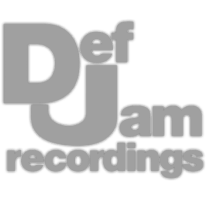Professional Analog Mastering.
Professional Analog Mastering.










We all know what distortion is from how it sounds, but what is it on a fundamental level?
In short, what we’re used to hearing are sine waves. Not often pure tone or single frequency sine waves, but a bunch of sine waves stacked on top of one another to create a complex waveform.
When sound travels through the air, that’s almost always what’s formed. Air molecules compress and contract gradually resulting in smooth transitions.
This is the case for sound pressures that range from our threshold of hearing to a little under our threshold for pain, so the majority of the time this is what we hear, and what we’ve come to expect as the normal way things should sound.
When this gradual transition is interrupted, for example, if the peak and trough of the waveform are held at a consistent amplitude for a period of time instead of behaving like they normally would - we’d achieve a square wave.
So that explains what distortion is, it’s a deviation of the typical sine wave we’ve become used to, but
Distortion isn’t as much a subtraction to a sound wave, as it is an addition.
But, let me explain in a less convoluted way.
Say we have a sine wave. We introduce a clipper, and whenever the peaks and troughs hit a ceiling, the waveform is limited to a specific amplitude.
This looks like part of the sine wave has been cut off, hence the name Clipper, but what’s actually happened is we’ve added a new wave.
A great video that shows this in detail is called “You Don’t Understand Saturation” if you want a more mathematical explanation, but I’ll sum it up here.
The new waveform is equal and opposite to the section of the sine wave that’s been affected.
So, the more I clip the original waveform, the higher the amplitude of this new equal and opposite waveform.
Additionally, notice that this new waveform isn’t the same frequency as the original. Specifically, it has 3 times the number of oscillations per second as the original sine wave.
So if the clipped sine wave is 100Hz, then this new waveform is 300Hz. If this sounds a lot like a harmonic, that’s because it is.
This is how harmonics are created. Changes to the original waveform create new waveforms that are whole number multiples of the original, like 2x, 3x, 4x, and so on.
This is the main reason why distortion sounds like distortion - we’re no longer listening to the original waveform, we’re listening to the original waveform plus one or more additional waveforms that are whole number multiples of the original frequency.
But not all distortion, or newly added waveforms are whole number multiples - in other words, there are ways to distort a waveform that results in a new wave that’s maybe 2.3x the frequency of the original, or I don’t know, 4.7x the frequency of the original.
And this brings me to the next important concept to understand:
Think about the term harmonic as it relates to music - in music, a melody can have harmonies.
As the melody changes from note to note, the harmony changes notes in a corresponding manner, just with different notes. For example, say I have a melody that starts with C4, also known as middle C on a piano. The harmony starts with C6 or 2 octaves above C4.
The frequency of a note doubles every octave. So, since C4 is 261.63Hz, this means C5 is 523.26Hz. C6 would then be 1046.52Hz, and so on.
Now, say I run C4 through a clipper - and that clipper creates a 3rd-order harmonic. The 3rd-order harmonic, being 3x the original frequency, has a frequency of 784.89Hz.
That’s essentially the note G5, which would be a perfect 5th of the original C4 note.
Music theory aside, multiplying a note’s frequency by a whole number will often result in another note.
When a distortion plugin creates a new waveform that’s in the same key as the original waveform, it’s going to sound musical, because it follows the same musical structure as the composition or arrangement.
This isn’t always the case with harmonic distortion; however, it occurs enough for listeners to prefer one form of distortion over another.
This is the primary reason even order harmonics are considered more musical. If I multiply C4 or 261.63Hz by 2, I’d get 523.26Hz or C5. If I multiply it by 4 I get 1046.52Hz or C6.
Even order harmonics are always perfect octaves, meaning they’ll always be in the same musical key, and subsequently sound more musical.
But what about multiples that aren’t whole numbers? Say I distort a wave in a way that creates a new waveform that’s 2.3x the original frequency - what happens then?
Going back to C4, or 261.63Hz x 2.3 = 601Hz, which doesn’t correspond to our Western musical scale. When played along with notes in our musical scale, it won’t sound musical - it’s not a note.
Since distortion combines the original waveform with the added waveform, this means that both C4 and this non-corresponding frequency will play at the same time; since our ears are acutely aware of pitch, octaves, harmonies, etc, this disharmonious frequency will stick out.
Why some distortion sounds pleasant and other distortion doesn’t come down to this. The added frequency either fits into the musical scale or it doesn’t.
Real quick, before we get too deep into the different types of distortion, let’s run through some...
Saturation refers to when a component is no longer capable of handling more input. For example, when tape saturates, all of the magnetic particles have been reoriented and can no longer represent or have their polarity changed to record additional signals.
This causes waveshaping - the input and output no longer have a 1:1 relationship, so higher amplitude signals will have to be reshaped. Like when we run a signal into a clipper, the ceiling serves as the point of saturation in which the amplitude is retained to a specific level.
As we covered, this reshaping causes harmonics - which is what we perceive as distortion.
So, saturation, waveshaping, and distortion can all somewhat be used interchangeably - they technically refer to different points in a process, but they’re all required. You can’t have waveshaping without saturation - if waveshaping is occurring there has to be some form of saturation.
If harmonics are generated, that means the wave was shaped, etc. They’re not exactly the same thing, but they’re so interconnected, you can get away with using them interchangeably.
There are 2 main categories for distortion - symmetrical and asymmetrical.
Symmetrical, like the clipping example I’ve been using, includes identical shaping to both the peak and trough of a waveform. Notice that both sides of the waveform, the positive and negative, the compression and rarefraction, the peak and trough, are clipped when I observe a clipped sine wave through an oscilloscope.
Asymmetrical includes shaping to either the peak or the trough, or to both but in different ways.
Maybe the peak is soft-clipped, but the trough is hard-clipped, or vice versa. Maybe the peak is left alone but the trough is affected, and so on.
This matters most due to how it alters the sound. Symmetrical distortion creates odd harmonics. Asymmetrical creates both even and odd harmonics.
Something called rectification creates only even harmonics, it’s a form of asymmetrical distortion, but the peak or trough is left completely alone, while the other is entirely inverted. It’s not super common as a creative effect, since it gets rid of the fundamental by essentially doubling the number of oscillations per second, but it's good to know about it nonetheless.
Tape, tube, transistor, transformer, digital or clipping, and any form of distortion you can think of, fall into these categories.
So, last up for this video, let’s discuss which forms of distortion or saturation are symmetrical, and which are asymmetrical, and see if we can find an example of rectification.
Tubes, Transformers, transistors, and guitar amps which are a combination of tubes and transistors, all introduce asymmetrical waveshaping when they saturate, meaning they generate both even and odd harmonics.
By extension, any compressors, equalizers, or similar hardware or hardware emulations that include any of these components or emulations can cause asymmetrical waveshaping and subsequent even and odd harmonics.
As for rectifiers, you can find plugins that introduce the effect to the audio, but the majority of rectifiers in hardware are used in power circuits to convert AC current into DC. This waveshaping occurs to the current, not the input or audio, so it shouldn’t create audible distortion.
Soft and hard knee clippers, tape, upward processors or maximizers like the Oxford inflator, and brick wall limiters, introduce symmetrical waveshaping when they saturate or process, meaning they generate odd harmonics.
Things get more complicated when you consider how plugins can vary in how they saturate from developer to developer.
For example, saturation in Fabfilter’s Saturn 2 is symmetrical, but saturation in Melda Audio’s Saturate plugin is asymmetrical.
Additionally, if you have a tape machine there are multiple points at which the signal can saturate. Saturating the tape itself results in symmetrical waveshaping; however, say the circuit or amplifier uses tubes, transformers, etc - then saturating the circuit would create asymmetrical waveshaping.
With so many variables, ways to code a plugin, ways to create a circuit, and so on, you can see how there are nearly endless possibilities.
Also, as I mentioned earlier, some plugins waveshape in a manner that creates more than just whole-number multiples of the saturated frequency.
If we observe the harmonics of this free plastic funeral plugin - one designed to create aggressive and chaotic distortion, notice how many harmonics are present.
This includes odd harmonics and potentially even harmonics; however, it includes frequencies that seemingly don’t relate to the original waveform.
When this occurs, it’s because one section of the oscillation is being shaped - creating a frequency that doesn’t correlate to the original.